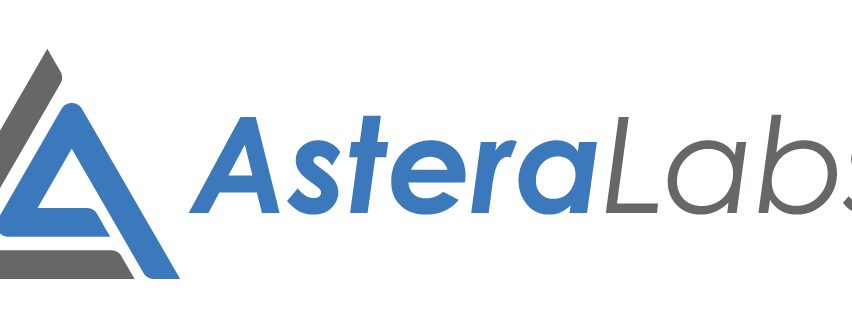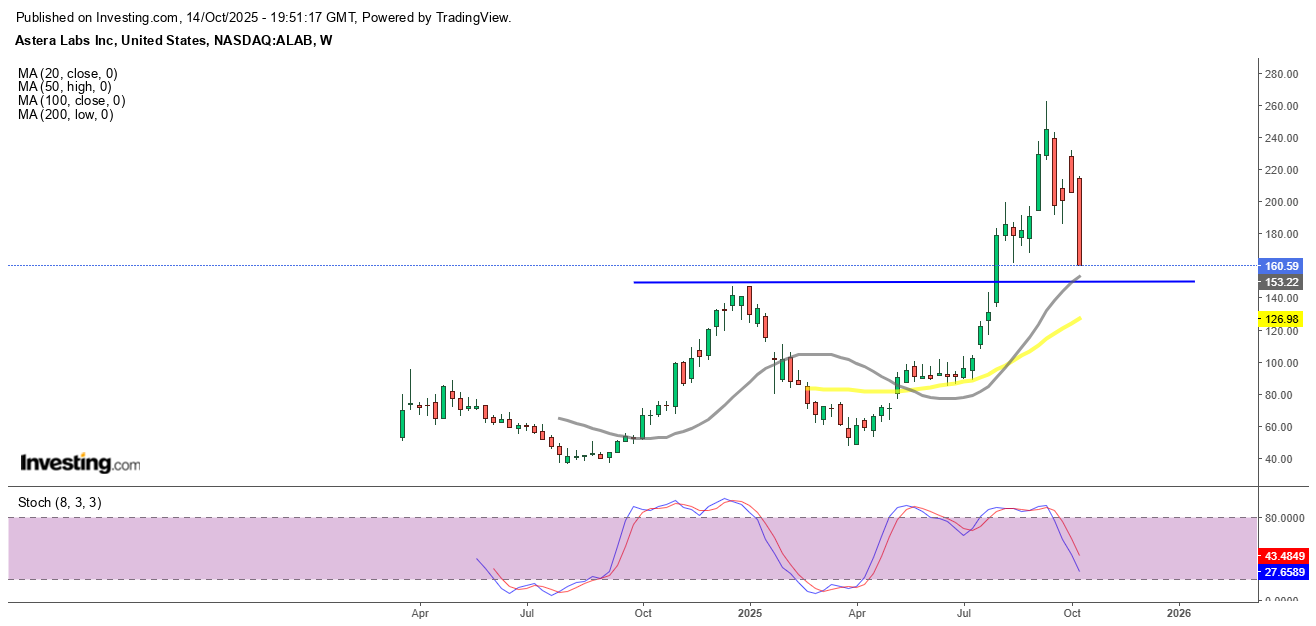ALAB Stock Plummets 40% Monthly as Competition Intensifies – $150 Next Target for Astera Labs Inc
https:/Astera Labs' once-soaring stock is currently plummeting as competition and new tech partnerships threaten its dominance in the...

Quick overview
- Astera Labs' stock has plummeted nearly 40% from its mid-September peak due to rising competition and new tech partnerships.
- The company's shares are now precariously positioned above a key support level of $150, which traders are closely monitoring.
- Investor confidence has been shaken by concerns over Astera's ability to maintain its market share amid aggressive moves from competitors like Arista Networks and AMD.
- The recent decline highlights the volatility in AI-linked equities, where rapid gains can quickly lead to significant corrections.
https:/Astera Labs’ once-soaring stock is currently plummeting as competition and new tech partnerships threaten its dominance in the quickly evolving networking sector. quillbot.com/paraphrasing-tool
From Meteoric Gains to a Sudden Collapse
Astera Labs (NASDAQ: ALAB) experienced one of the most dramatic runs in the semiconductor space this year — soaring nearly 586% from April’s trading price of $46 to a mid-September peak near $364. But the rally has since collapsed. Shares have fallen roughly 40% from their highs, sliding another 6% on Monday and plunging 20% today, as investor confidence evaporates.
ALAB Chart Weekly – Will the Support at $150 Hold?
Now, the stock sits precariously above a key technical support level around $150, aligned with the 30-week simple moving average (SMA) — a zone traders will watch closely for signs of stabilization or further breakdown.
Competitive Pressures Shake Confidence
The selloff was sparked by renewed fears that Astera’s market share could shrink amid rising competition in AI and cloud infrastructure connectivity. Arista Networks recently launched a new Ethernet ecosystem, signaling aggressive expansion into the same high-performance connectivity space Astera currently leads.
Meanwhile, AMD’s partnership with Oracle to deploy 50,000 GPUs starting in late 2026 introduced further uncertainty. Together, these developments have raised questions about whether Astera can maintain its technological edge as industry standards rapidly evolve.
Market Reaction Reflects Deeper Worries
The reaction from investors has been swift and severe. Market participants are increasingly uneasy about Astera’s ability to defend its position as new hardware ecosystems — built around proprietary technologies — gain traction.
Online discussions and institutional notes reflect a growing belief that the AI infrastructure landscape is becoming more fragmented, potentially leaving Astera vulnerable if customers shift toward alternative interconnect solutions that bypass its products altogether.
A Familiar Fear Resurfaces
This latest drop echoes anxiety first seen back in September, when Morgan Stanley flagged potential risks following Intel’s collaboration with Nvidia to co-develop data center and PC chips. Analysts warned that Nvidia’s NVLink protocol could eventually displace traditional PCIe connections — a critical area where Astera Labs derives a large portion of its revenue.
The new AMD-Oracle partnership has now reignited those same concerns. Investors fear these high-profile deals could further reduce demand for Astera’s PCIe-based connectivity solutions, undermining its growth prospects just as expectations had soared.
Astera’s Position in AI Infrastructure
Astera Labs builds connectivity solutions that serve as the backbone of cloud and AI infrastructure, linking GPUs, CPUs, and memory systems to optimize performance in data centers. Its technology has become crucial as hyperscalers ramp up AI training capacity, but the firm’s fortunes are closely tied to standards like PCIe and CXL — both of which could face competition from proprietary alternatives in the coming years.
Despite this, analysts note that Astera’s deep engineering capabilities, diverse customer base, and role in next-gen architectures like CXL 3.0 could still provide a foundation for recovery once current market fears subside.
Outlook: Testing Investor Conviction
Astera Labs’ spectacular rise was fueled by optimism surrounding the AI infrastructure boom. But the latest correction reveals how fragile sentiment can be when innovation cycles collide.
While the company’s long-term growth prospects remain tied to structural demand for faster, smarter connectivity, the near-term outlook is clouded by intense competition and investor skepticism. The next few weeks — and whether support holds at $150 — could determine if this is a short-term shakeout or the start of a deeper repricing.
Conclusion: Astera Labs’ fall from grace underscores a broader theme in AI-linked equities: explosive gains often invite equally sharp corrections. Competitive shifts, changing partnerships, and evolving standards are testing the company’s resilience. Whether it stabilizes or slips further may depend on how quickly it can reassure investors that its technology remains indispensable in the race to power AI’s next frontier.
- Check out our free forex signals
- Follow the top economic events on FX Leaders economic calendar
- Trade better, discover more Forex Trading Strategies
- Open a FREE Trading Account
